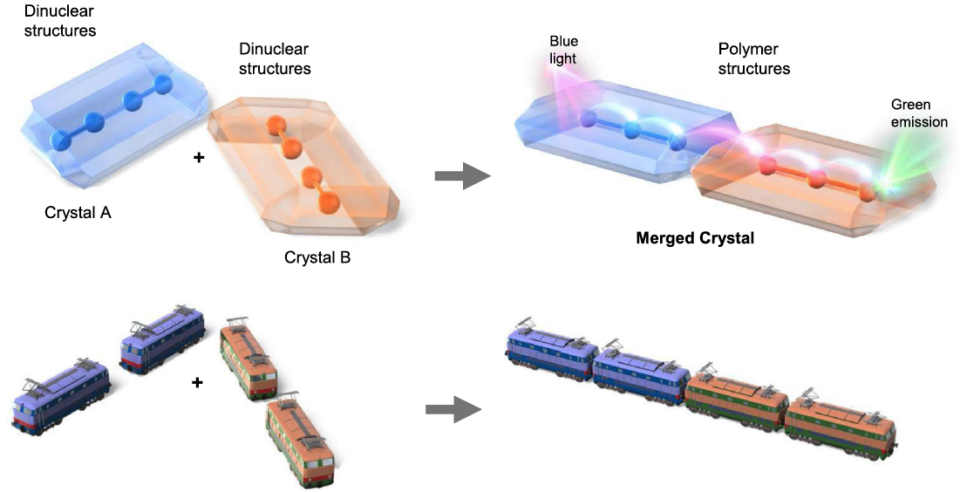A team led by researchers at ICReDD and Hokkaido University and have developed a “photonic molecular train” that can transfer information via light between two different coupled crystals in a directed fashion, which is a property potentially useful for circuit design in high-speed optical devices.
Researchers in this study created two different “soft” molecular crystals, which are crystals that can undergo changes in their molecular arrangement when subjected to an external stimulus. Such crystals often have excellent optoelectronic properties but are held together by weak intermolecular forces.
In this study, researchers discovered that exposing the two different molecular crystals to pyridine vapor and then removing the vapor by vacuum created strong chemical bonds, rather than just weak intermolecular forces, between the two crystals. This “molecular train” consists of two bonded crystals that have similar molecular structures, except that one crystal features a dysprosium ion at the center of its repeating polymer subunit while the other crystal has a terbium ion in the corresponding location.
After forming a chemical bond between these two crystals, it was found that light could be efficiently transferred from one crystal to the other in a directed fashion. Shining a type of blue light that only the dysprosium ion can absorb resulted in a strong emission of green light from the terbium ion in the adjacent bonded crystal, demonstrating the directed transfer of light from one crystal to another.
Coupling different emissive crystals at a heterogeneous interface opens up new areas of study. Judicious modification of the center ions and surrounding molecular structure could lead to the development of new optical materials, including nanocrystal lasers and fibers.


